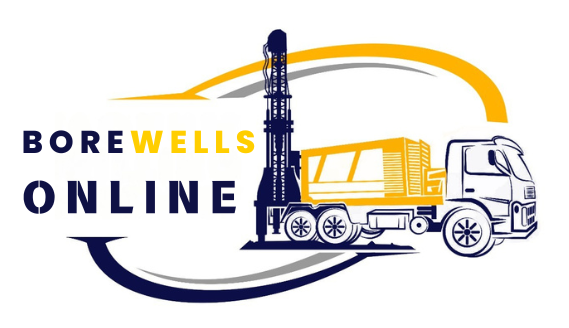Reboring a borewell involves cleaning, deepening, or re-drilling an existing borewell to improve water yield or to restore functionality. The process requires careful planning and execution to ensure safety and effectiveness. Here are the steps involved in reboring a borewell:
Steps for Reboring a Borewell
- Initial Assessment:
- Inspection: Conduct a thorough inspection of the existing borewell to assess its current condition. This includes measuring the depth, diameter, and checking for any obstructions or damages.
- Water Testing: Test the water quality to understand any contamination issues and ensure it meets the required standards.
- Regulatory Compliance:
- Permits: Obtain necessary permits and approvals from local authorities for reboring the borewell. Ensure compliance with all regulatory requirements.
- Notifications: Inform neighbors or relevant stakeholders about the reboring activity, especially if it could affect the surrounding area.
- Planning:
- Site Preparation: Prepare the site by clearing the area around the borewell. Ensure accessibility for drilling equipment and materials.
- Safety Measures: Implement safety measures to protect workers and equipment. This includes marking the area, using safety gear, and ensuring proper handling of machinery.
- Cleaning the Borewell:
- Debris Removal: Remove any debris, silt, or blockages from the existing borewell using suitable cleaning methods such as airlifting or high-pressure water jetting.
- Inspection After Cleaning: Conduct another inspection to ensure the borewell is clean and free of obstructions.
- Reboring Process:
- Drilling Equipment Setup: Set up the drilling rig and other necessary equipment at the borewell site.
- Deepening or Widening: Depending on the requirement, proceed with deepening or widening the existing borewell. This involves drilling deeper or expanding the borewell diameter to access more water or improve flow.
- Lining: Install appropriate casing pipes to stabilize the borewell walls and prevent collapse. This also helps in protecting the water quality by preventing contamination from surface water.
- Well Development:
- Gravel Packing: Place gravel or sand around the casing pipe to enhance water flow and filter out fine particles.
- Flushing: Flush the borewell with clean water to remove any remaining debris or contaminants.
- Pump Installation:
- Selecting the Pump: Choose a suitable submersible or jet pump based on the new depth and water yield of the borewell.
- Installation: Install the pump and associated plumbing. Ensure that the pump is properly positioned and securely installed.
- Testing and Monitoring:
- Water Yield Testing: Test the water yield and flow rate to ensure the reboring has improved the borewell’s performance.
- Water Quality Testing: Conduct water quality tests to confirm that the water is safe for its intended use.
- Documentation and Reporting:
- Records: Document the entire reboring process, including measurements, materials used, and test results.
- Reporting: Submit the required reports to local authorities, detailing the reboring process and outcomes.
- Site Restoration:
- Clean-Up: Clean up the site, removing any leftover materials, debris, and equipment.
- Restoration: Restore the surrounding area to its original condition as much as possible, ensuring it is safe and tidy.
Safety and Environmental Considerations
- Safety Gear: Ensure all personnel involved wear appropriate safety gear, including helmets, gloves, and protective clothing.
- Contamination Prevention: Take measures to prevent contamination of groundwater and surface water during the reboring process.
- Waste Disposal: Properly dispose of any waste materials generated during the reboring process in accordance with environmental regulations.
Reboring a borewell is a complex process that requires expertise and precision. It’s advisable to hire experienced professionals to ensure the reboring is conducted safely and effectively.
